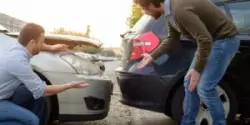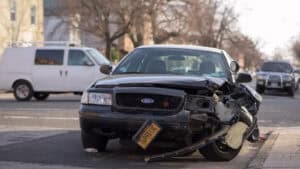
Rear end car accidents are very common. Having brakes that are checked when a car goes in for an oil check and regular maintenance is a good way to make sure the brakes are working properly. You can only do your part, however, and you have little control over how well, or poorly, other vehicles are braking on the road with whom you share it.
STATE LAW REGARDING REAR-END ACCIDENTS
If you are rear-ended the driver who hit you will be found guilty of a traffic infraction for traveling too fast for conditions and for not being able to properly handle their vehicle. Unless the at-fault driver can somehow prove that you swerved into their lane, then liability is clear on the part of the driver who struck you.
Here are a few important helpful statistics that speak to why rear-end car accidents happen so frequently:
- It can take up to 400 feet to reach to something you see on the road and force your car, truck, or SUV to a complete stop, assuming you are traveling at 50 miles per hour. If you are going at normal highway speeds of 60 or 65 miles per hour, it can take even more feet. To put 400 feet in perspective, 400 feet is about the length of an average-sized city block.
- But even at 30 miles per hour, it can take 200 feet to brake your car, truck, or SUV to a complete stop.
Given these numbers, it is easy to understand why a rear-end car accident occurs, especially in our age of very distracted driving when many people are on their cellphones, texting, watching videos, playing games, or talking on their phone while they are driving, thus making it impossible for them to stop in time to avoid the rear-end of another car.
For a free legal consultation with a Personal Injury Lawyer
A common rule of thumb to know if you are traveling too fast in order to brake in time, try the Four Second Sight Distance Rule. If you pick out a stationary object in the far distance, count to four, and if you reach the car before you finish counting to four, then you are going at a safe speed, but if not, you’re going too fast.
Darkness is another common reason for rear-end car accidents. Most headlights will only let you see about 400 feet in front of you. Rain, snow, and fog are also common reasons for people getting into rear-end car accidents. When the conditions are bad, such as rain, fog, or snow, you probably cannot see more than 200 feet ahead. This is not enough time to stop.
We Are committed to winning and winning big for our clients





